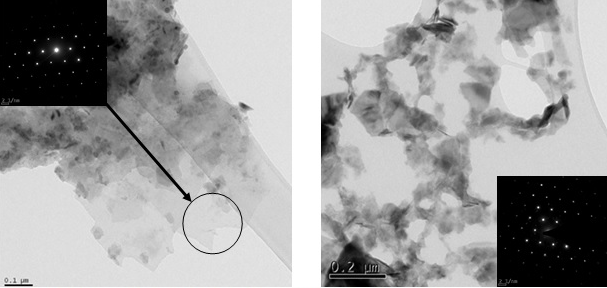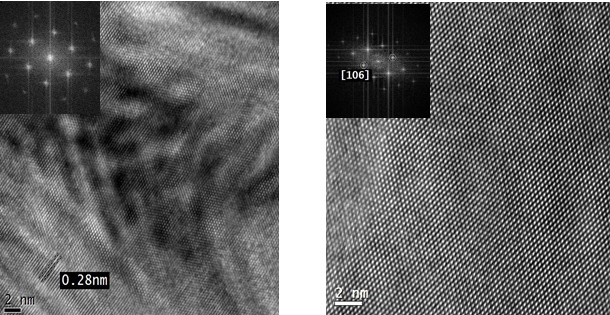IT-2-P-1996 Structural and spectroscopic analyses of exfoliated 2-D transition metal dichalcogenides nanosheets with special emphasis on TEM
Having unique physical, chemical and structural properties, 2-D nanomaterials such as the Transition Metal Dichalcogenides (TMD’s) have attracted considerable attention. Similar to graphene, TMD’s are atomically thin two dimensional materials with electronic properties different from their bulk counterparts. Graphene’s vanishing band-gap for semiconductor application poses a major setback. As a result, it is not suitable for logic applications, because devices cannot be switched off. On the other hand, 2D TMDs (i.e. MoS2, NbSe2, MoSe2, etc.) are semiconductors with a variety of tunable bandgaps. This property makes them perfect contenders for replacing Silicon in the semiconducting industry. In addition, different classes of 2-D materials such as like Transition Metal Oxides (TMOs) have shown to exhibit excellent electrical, optical and electrochemical properties. In virtue of this properties they have become excellent candidates for applications in energy storage devices such as lithium-ion batteries and supercapacitors.
Few layered or single-layered TMDs and TMOs can be obtained either through exfoliation of bulk material or by a bottom-up synthetic approach. The approached used in our group is the synthesis of 2D materials by liquid-phase exfoliation. This method produces atomically-thin and few-layers sheets dispersed in a solvent media. In order to apply these materials to feasible applications it becomes crucial to analyse their structure and correlate that to the ultimate properties when these materials are used in devices.
In this work we present a structural and spectroscopic characterization of a range of liquid-phase exfoliated 2D materials. Major focus is given to the study of their crystallographic structure, presence of defects, possible oxidative processes, and edge-effects. For that we use a combined approach, where by X-ray diffraction (XRD), scanning electron microscopy (SEM), high-resolution (scanning) transmission electron microscopy - HR(S)TEM, energy dispersive X-ray spectroscopy (EDX), electron energy loss spectroscopy (EELS) and X-ray photoelectron spectroscopy (XPS) are all used to obtain a throughout characterization of the materials.
The authors gratefully acknowledge funding from the FP7 People Network – ITN: Initial Training Network and Science Foundation Ireland – European
Research Council: SFI - ERC Support Program

Fig. 1: TEM image of MoSe2 (LHS) and WSe2 with their respective SADP. |

Fig. 2: HR-TEM image of MoSe2 (LHS) and WSe2 with FFT |